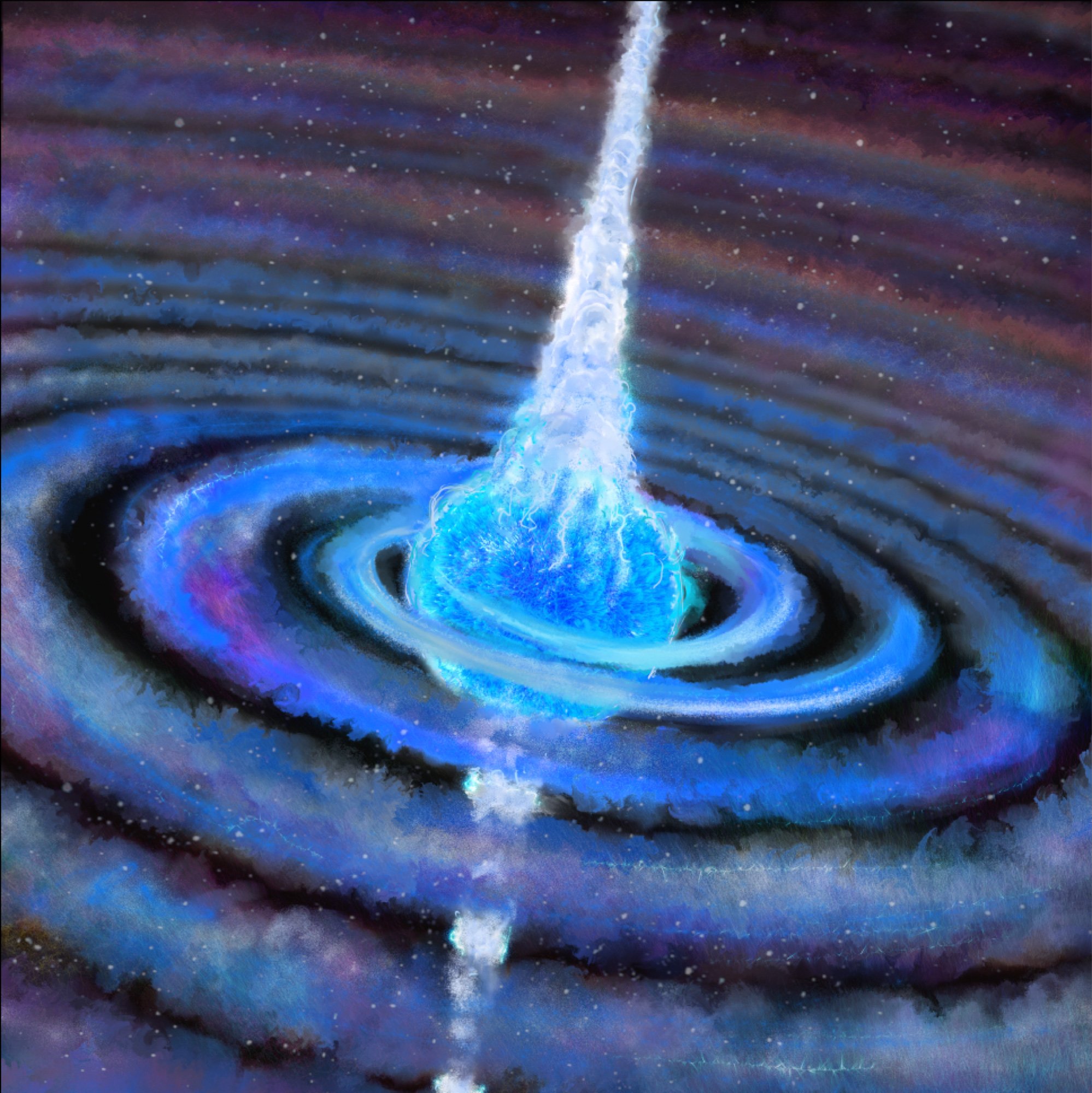
The Dynamic Radio Sky
With its unmatched survey speed, the DSA-2000 will revolutionize access to the time-domain radio sky. Time-domain astronomy is central to the astronomical surveys planned for the 2020s, such as with the Vera Rubin Observatory. On millisecond timescales, over 10,000 fast radio bursts (FRBs) will be detected and pinpointed each year. On timescales of days to years, the DSA-2000 will open a unique window on explosive and impulsive transients, such as stellar core-collapse and mergers, and magnetospheric flares and outbursts from active stars with implications for exoplanetary habitability.
Image: C. Carter
Exploring the Circum- and Intergalactic Medium with FRBs
Fast radio bursts (FRBs) are millisecond-timescale extragalactic transients, and their dispersion measures (DMs; quantifying the total gas column densities) predominantly arise from intervening cosmic baryons. FRB observations to date already reveal the effects of baryons surrounding galaxies, in the intra-cluster medium, and in the intergalactic medium. Samples of ≳ 10⁴ arcsecond-localized FRBs can constrain the cosmic baryon distribution with sufficient accuracy to form phenomenal probes of feedback models, impacting our understanding of galaxy formation. The DSA-2000 will be the most prolific and sensitive discovery engine for FRBs, discovering ≳ 10⁴ events per year localized to < 0.5”.
Left: Model population of 50,000 DSA-2000 FRBs likely detected in 5 years, in two scenarios spanning the range of FRB luminosity functions. The extragalactic dispersion measures (DM) encode the baryon column densities intercepted by the FRBs along their sightlines (schematically shown in top left). Also shown (red points) are 30 observed FRBs with host-galaxy redshift measurements from the DSA-110. Right: Forecasts of the impact of DSA-2000 FRB data on cosmological-parameter estimation with Euclid weak-lensing measurements. DSA-2000 FRBs sensitively probe the distribution of baryons around and in between galaxies, which depends on poorly understood baryon feedback (TAGN). A measurement of the cross-power spectrum of FRB DMs and cosmic shear sensitively constrains TAGN, which is covariant with several key parameters: the Hubble constant, h, the cosmic baryon density, Ωb, the matter-fluctuation amplitude, σ₈, and the sum of the neutrino masses, Ʃmν.
Stellar Explosions: Common Envelopes and Relativistic Jets
Day- to year-timescale radio transients offer a unique window on extragalactic stellar explosions powered by core-collapse, merger and accretion. Synchrotron emission from blastwave shocks traces the kinetic energy of ejecta, and the environment of the explosion. Current surveys, such as the VLA Sky Survey (VLASS) and the Variable and Transient Survey (VAST) with ASKAP, are the first with sufficient survey speed to detect significant samples of radio transients, with > 10³ events detected in each epoch of VLASS alone. This transformed view of the radio time-domain sky has revealed entirely new populations. The DSA-2000 will survey a parameter space 2000 times larger than VLASS and detect ~10⁶ transients, leading to many new populations, and large statistical samples of these recently discovered classes.
The DSA-2000 will detect >10⁴ radio transients associated with pre-supernova mass loss driven by binary interaction. Coupled with prior optical supernova classification from, e.g., Rubin/LSST, this sample will establish the pathways of binary interaction that lead to various sub-classes of supernovae and BNS/NSBH systems. Additionally, the DSA-2000 will identify the presence of high-velocity ejecta for various sub-classes of supernovae, revealing the true rate of relativistic outflows associated with and perhaps powering supernovae.
Left: Radio emission from stellar explosions enables direct measurements of the explosion energies and velocities. This enables inference of the mass of the circumstellar material swept up by the blastwaves, indicated by diagonal dashed lines. The shaded regions indicate the regimes ripe for discovery by the DSA-2000. Right: The interpretation of DSA-2000 transient discoveries will be enhanced through matching with optical counterparts from Rubin/LSST. Single-epoch sensitivities of the DSA-2000 and LSST are shown, with existing time–domain surveys. The diagonal lines show luminosity-distance horizons for median examples of different classes of transient, identified in the left panel. Although the DSA-2000 probes a 700 times larger volume than VLASS, the increased number of epochs imply a transient population ~2000 times larger.
